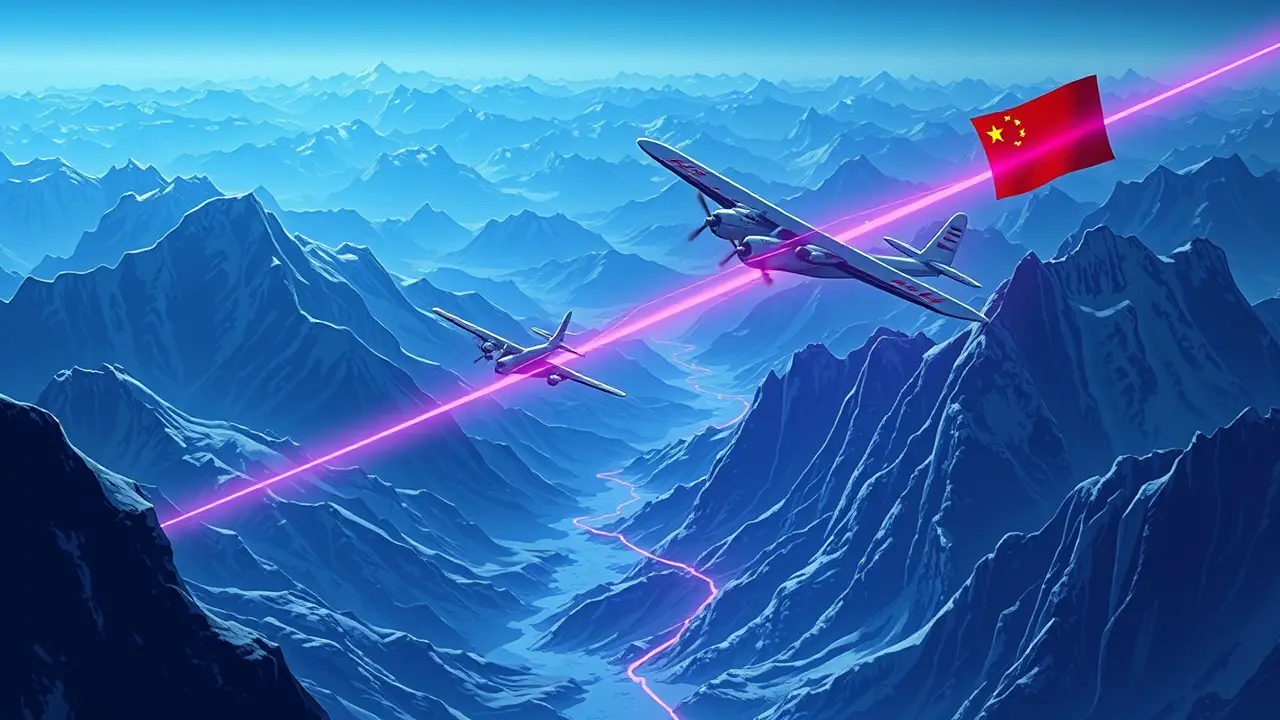
PoliticsdiplomacyBilateral Relations
Historic China-US WWII cooperation offers lesson for today.
RO
Robert Hayes
12 hours ago7 min read4 comments
More than eight decades ago, a remarkable chapter in Sino-American relations unfolded high above the treacherous Himalayas, where American and Chinese pilots collectively navigated the perilous 'Hump' air route—a daring aerial bridge from India to China that became a symbol of mutual necessity and shared sacrifice during World War II. These aviators, flying unpressurized and often unarmed transport aircraft like the C-46 Commando and C-47 Skytrain, braved not only Japanese fighter patrols but also some of the world's most unforgiving weather and terrain, with mountain peaks soaring to 16,000 feet and navigational challenges that claimed over 1,300 aircraft and the lives of more than 3,000 crew members.Their mission was a two-way strategic lifeline: flying in critical weapons, aviation fuel, and medical supplies to sustain the Chinese war effort against Imperial Japan, and on their return flights, carrying out vital Chinese strategic minerals, including tungsten and tin, which were essential for hardening Allied armor and manufacturing munitions, thus directly feeding the industrial might of the United States and its allies. This cooperation, formalized under the American Volunteer Group—the famed 'Flying Tigers'—and later the China National Aviation Corporation (CNAC), was not merely a logistical operation but a profound geopolitical alignment, orchestrated at the highest levels between figures like Generalissimo Chiang Kai-shek and President Franklin D.Roosevelt, who saw a unified China as a crucial bulwark against Japanese expansionism in the Pacific Theater. The Hump operation, which delivered over 650,000 tons of materiel by war's end, was a testament to a time when strategic interest and a common enemy forged a powerful, albeit temporary, alliance, a stark contrast to the complex and often adversarial relationship that defines the current era.Today, as tensions simmer over trade, technology competition, and territorial disputes in the South China Sea, the legacy of this wartime partnership offers a critical historical precedent, a lesson in what is possible when two great powers subordinate their differences to confront a larger, existential threat. Analysts like Dr.Evelyn Chang, a senior fellow at the Center for Strategic and International Studies, often point to this period as a 'lost blueprint' for cooperation, arguing that the trust built through shared military endeavors, however fragile, created channels of communication that have since atrophied. The current geopolitical landscape, marked by decoupling in critical supply chains and mutual suspicion, seems a world away from the shared skies over the Hump, yet the underlying logic of interdependence remains; just as the United States relied on Chinese tungsten for its war machine, today's global economies are inextricably linked, suggesting that the cost of outright conflict is prohibitively high for both nations.The lesson for contemporary policymakers in Washington and Beijing is not one of nostalgic sentimentality, but of cold, hard realpolitik: that even amidst fierce competition, avenues for pragmatic collaboration on transnational threats—from climate change to global pandemics—must be identified and cultivated, lest the world witness a failure of statecraft on a historic scale. The brave pilots of the Hump, flying through the 'rock pile' with courage and determination, demonstrated that alliances of necessity can yield monumental victories; the question now is whether today's leaders possess the same foresight to navigate the equally daunting political peaks and valleys that separate cooperation from conflict.
#editorial picks news
#China-US relations
#World War II
#history
#cooperation
#strategic minerals
#tungsten
#tin
#The Hump
Stay Informed. Act Smarter.
Get weekly highlights, major headlines, and expert insights — then put your knowledge to work in our live prediction markets.
Related News
© 2025 Outpoll Service LTD. All rights reserved.













